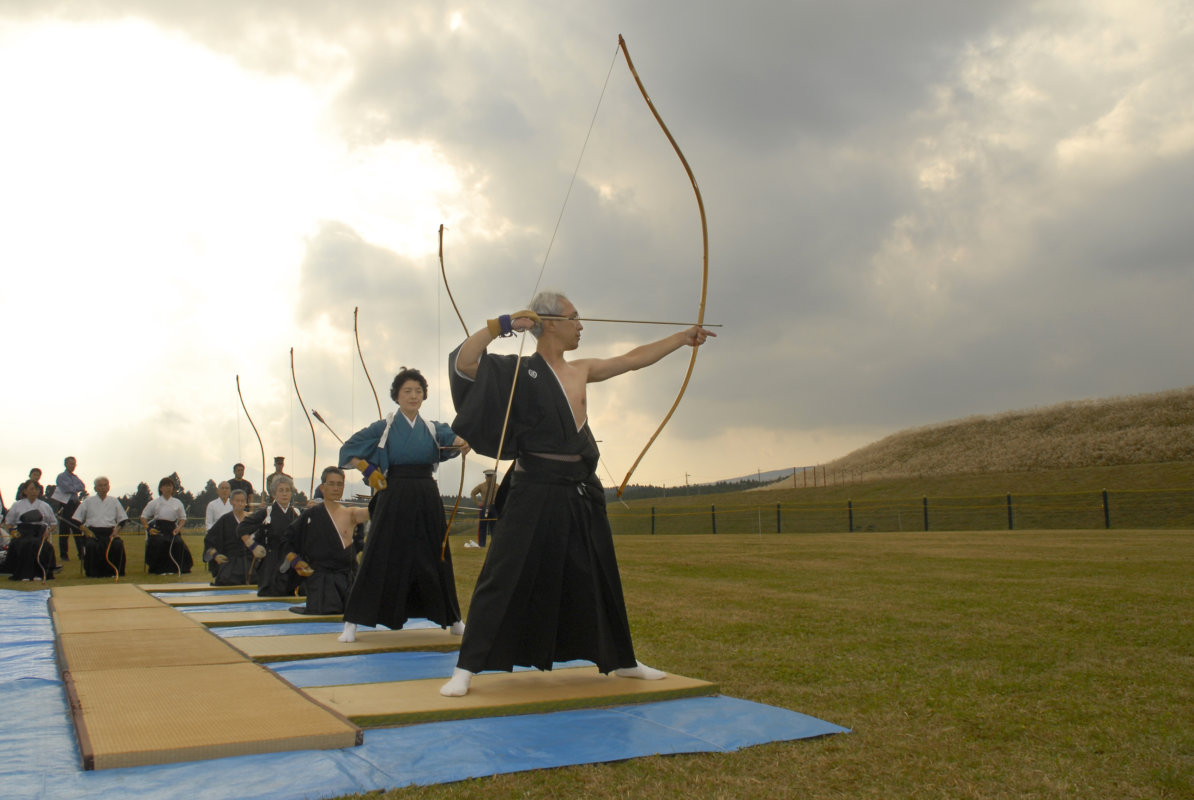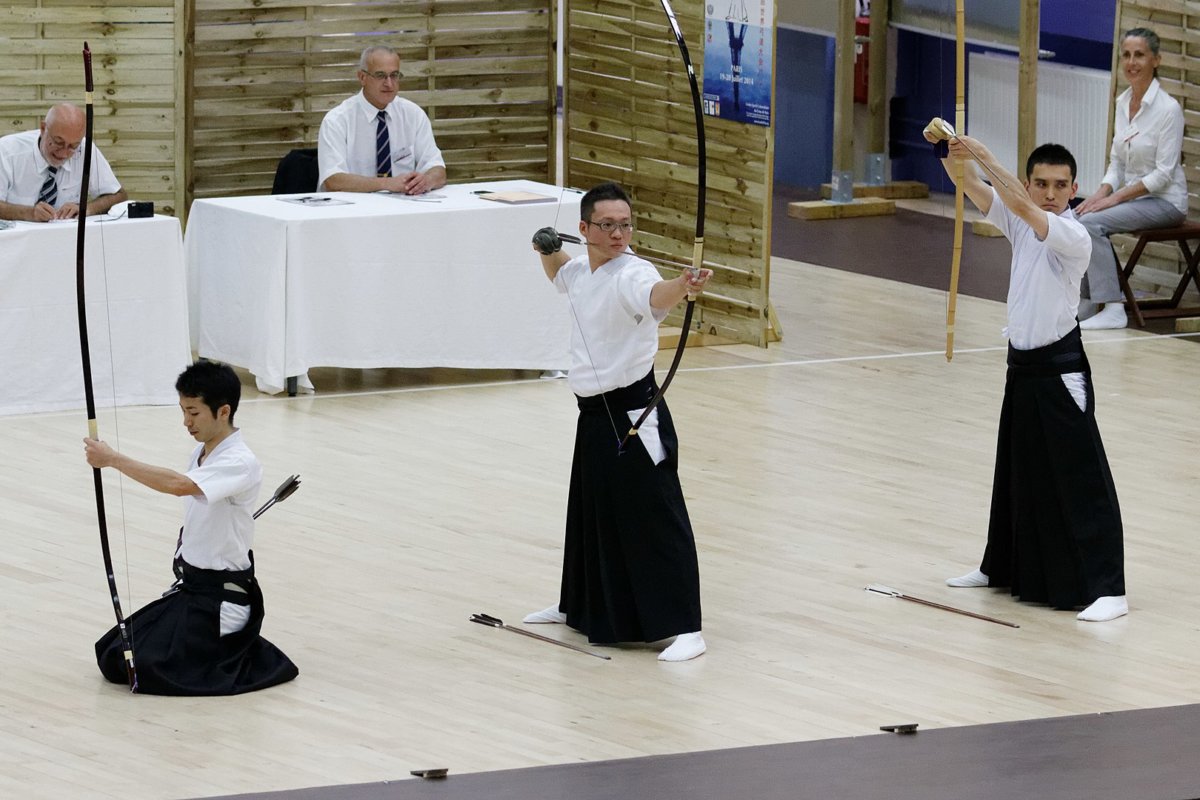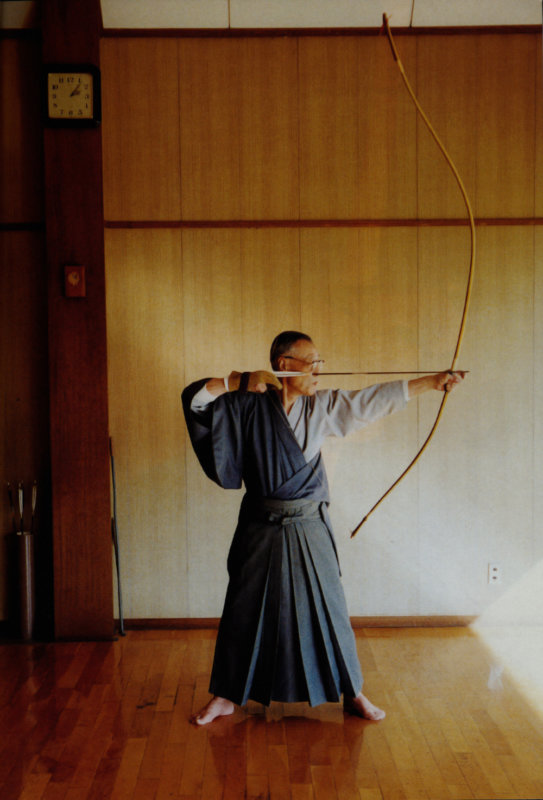When we think of archery, the first thought may be of hunting. Or the Olympics. Probably not zen or meditation.
Contrary to what it looks like in films, archery entails more than just holding a bow and arrow. Just imagine everything that goes into hitting a target: Your posture has to be correct, your gaze fixed, your mind clear, and your muscles ready. No matter the distance, executing the proper shot requires focus and concentration. For Japanese archers, preparation can go beyond taking a few deep breaths before surrendering the arrow. They call this sport and art form Kyūdō.
What is Kyūdō?
Kyūdō is an ancient form of Japanese archery that is often associated with Zen Buddhism and relies on meditative processes. Unlike other forms of archery, Kyūdō measures success in terms of how well the archer is able to shoot at their target. Similar to OSHO active meditation, Kyūdō aims to train the body and mind at the same time, making practitioners aware of how their mental and physical states operate in tandem.
Japanese archery dates back to the Shinto period, where bows and arrows were highly ritualized and used in numerous ceremonies. Yabai’s article on Kyūdō’s history traces its beginnings to archery as a martial art, which samurais had to master during Japan’s medieval period. Kyūdō, along with other martial arts became lost, especially with the arrival of guns in the 16th and 17th centuries. During the Edo period (1603-1868) people looked to archery as a way to practice the sport while also developing one’s mental state.

The Mentality Behind Kyūdō
The International Kyūdō Federation’s guide on the mental attitudes of the sport emphasizes that practitioners learn and re-learn how to tune out sensory disturbances. These can greatly impact their shot. Cultivating fudoshin (state of mind) is crucial, and this is what differentiates a good from a great Kyūdō archer. People have also related fudoshin to the Zen practice zanshin, which denotes utter focus with no room for distraction.
This emphasis on one’s attitude and mindset makes Kyūdō a completely different sport from many other athletic pursuits, especially since it requires much less physical exertion. People of all ages practice Kyūdō, from high school students to senior citizens.
The IKF also highlights how a big focus of Kyūdō is on reflection and mental soundness. Researchers from Maryville University have found distinct connections between mental health and learning development. As recent studies have aimed to dig deeper into alternative methods to help cultivate learning and improve mental health, numerous exercises have gained mainstream appeal. The mental clarity brought about by Kyūdō can actually sharpen the mind and assist with other tasks. Ultimately what sets Kyūdō apart is that it helps practitioners take the time to reflect on performance and keep them in tune with their body and mind.
Where is Kyūdō Currently Practiced?
Although Kyūdō is not as well known as other martial arts such as judo and karate, you can easily find dojos, if you look in the right places. This zen archery practice has even gone global. There are Kyūdō dojos across various U.S. states, including Washington, California, Georgia, and Indiana.
That said, Japan is still where the most respected Kyūdō dojos are located. Established in 1949, All Nippon Kyūdō Foundation is arguably the largest and most prominent dojo. With headquarters in Tokyo, affiliate dojos exist throughout Japan.
Are you looking for a sport that sharpens mind and body? This Japanese Zen archery Kyūdō may just be the one you’ve been looking for.

Allie Jill is a self-care enthusiast and life-long meditation advocate. She loves reading esoteric books about ancient healing practices and spirituality and spending time with her two dachshunds.



